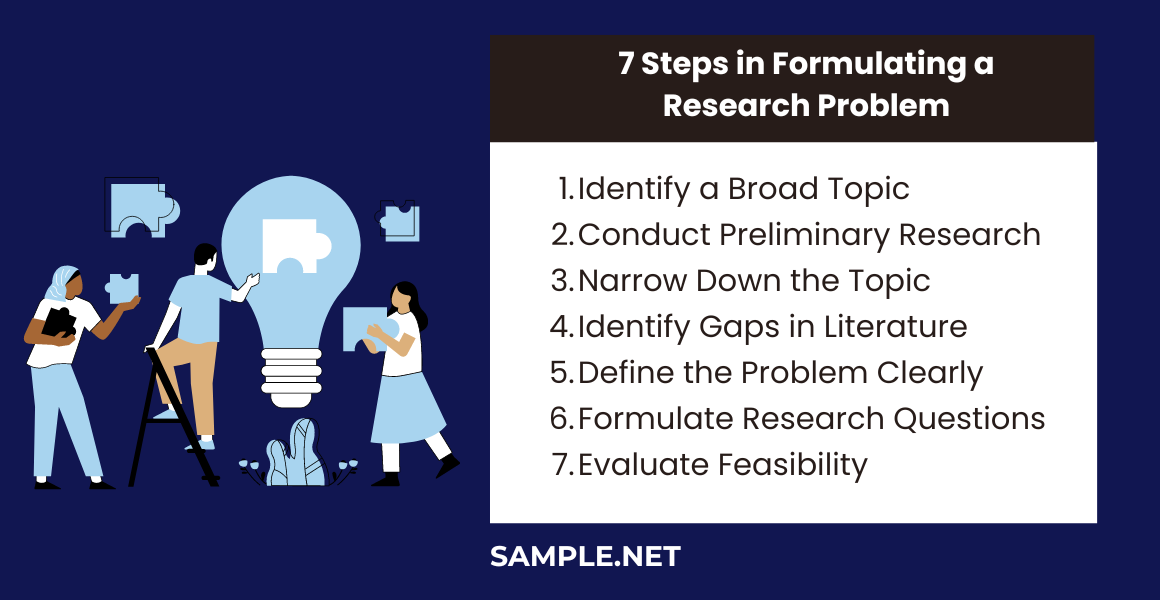Research Problem Statement Samples
-
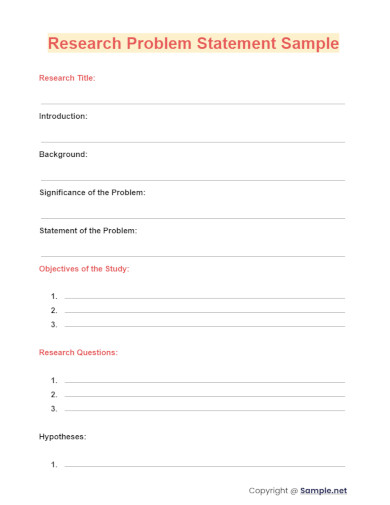
Research Problem Statement Sample
download now -
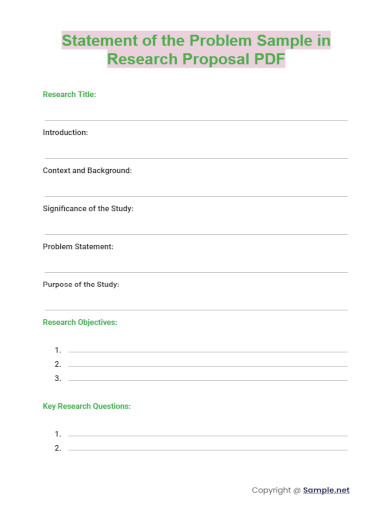
Statement of the Problem Sample in Research Proposal PDF
download now -
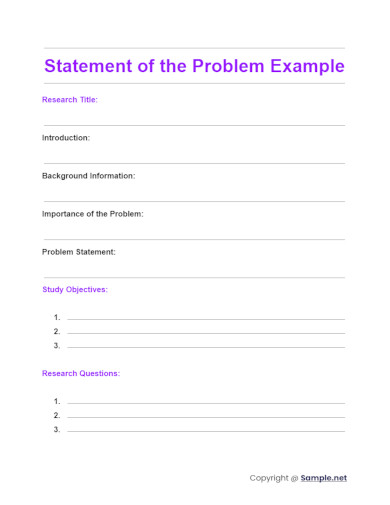
Statement of the Problem Example
download now -
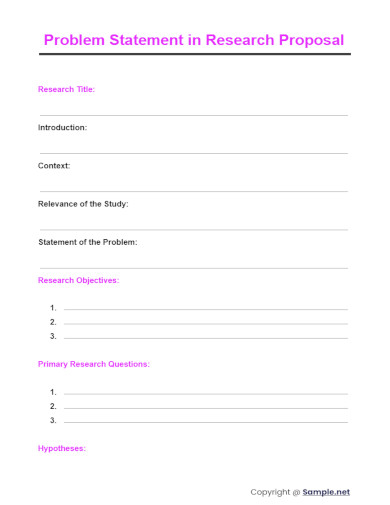
Problem Statement in Research Proposal
download now -
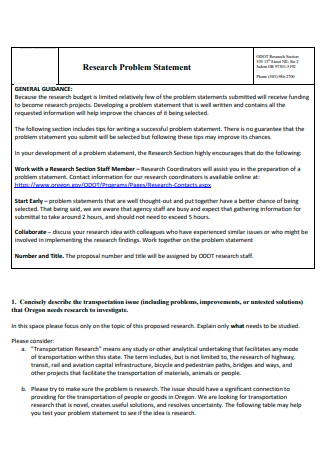
Research Problem Statement Template
download now -
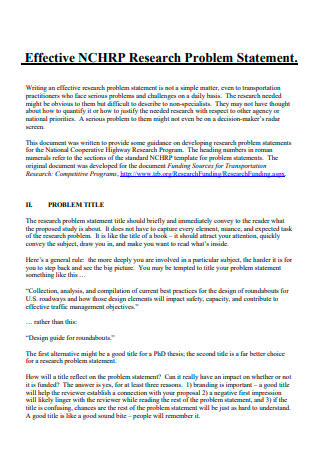
Effective Research Problem Statement
download now -
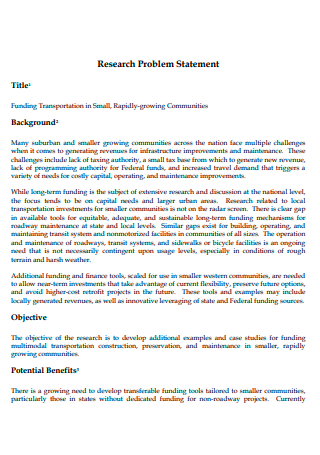
Research Problem Statement in PDF
download now -
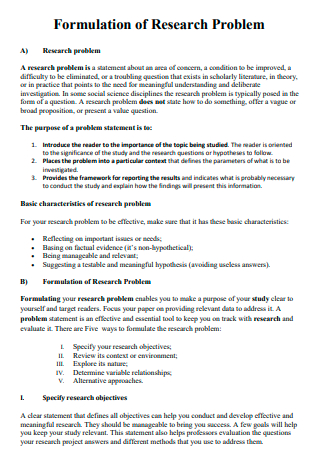
Formulation of Research Problem Statement
download now -
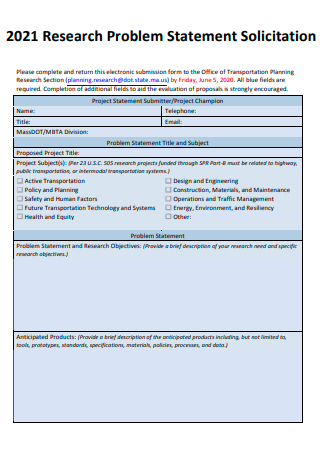
Research Problem Statement Solicitation
download now -
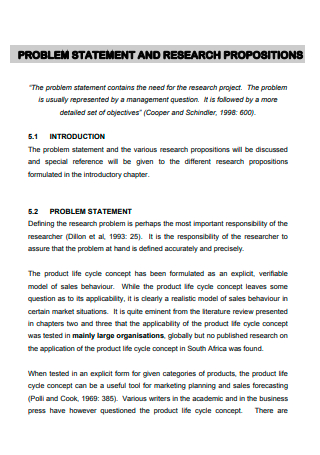
Research Propositions Problem Statement
download now -
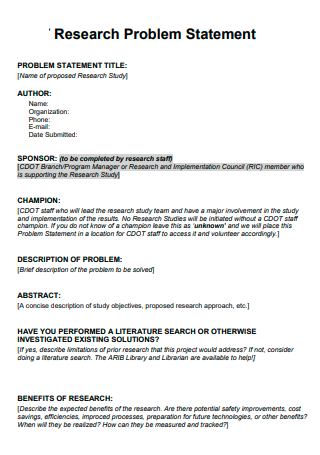
Basic Research Problem Statement
download now -

Department of Transportation Research Problem Statement
download now -
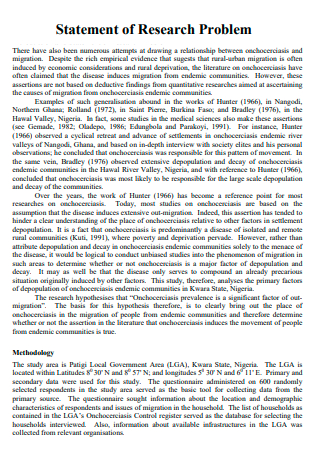
Standard Research Problem Statement
download now -
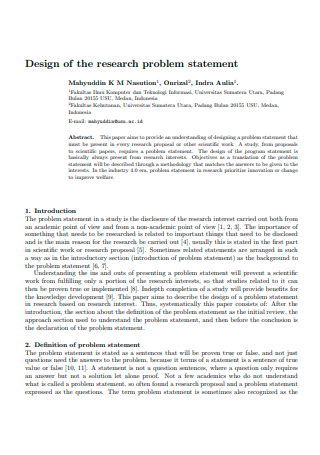
Design of Research Problem Statement
download now -
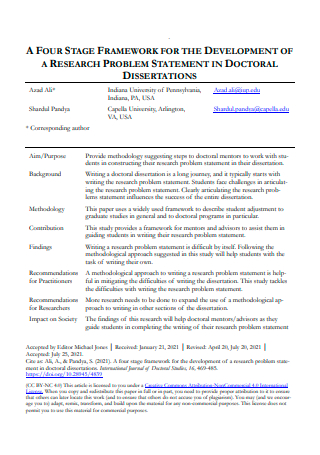
Research Problem Statement in Doctoral Dissertation
download now -

Nursing Research Problem Statement
download now -
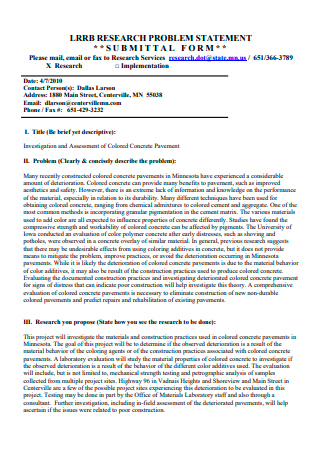
Research Problem Statement Submittal Form
download now -
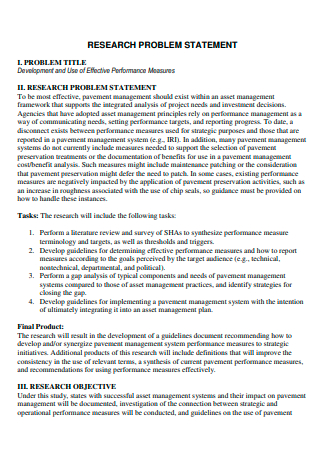
Formal Research Problem Statement
download now
FREE Research Problem Statement s to Download
Research Problem Statement
Research Problem Statement Samples
What is Research Problem Statement?
Types of Research Problems
Components of a Research Problem Statement
How To Formulate a Research Problem Statement
What are the three parts of a problem statement?
What is the importance of a problem statement?
What makes a good problem statement?
What Do You Write in a Research Problem Statement?
What Are the Three Parts to the Problem Statement?
What Are the Five P’s of the Research Problem?
What Are the 7 Steps in Formulating a Research Problem?
What Are the 5 Elements of a Problem Statement?
What Are the 5 Criteria for a Research Problem?
What Are the Five Phases of the Research Problem?
What is the Structure of the Problem Statement?
Can a Problem Statement Be a Question?
How Do You Write a Problem Statement in One Sentence?
How Long Should a Problem Statement Be in Research?
What is the Best Way to Write a Problem Statement?
What Are the Most Common Research Problems?
What Are the Components of a Research Problem?
Download Research Problem Statement Bundle
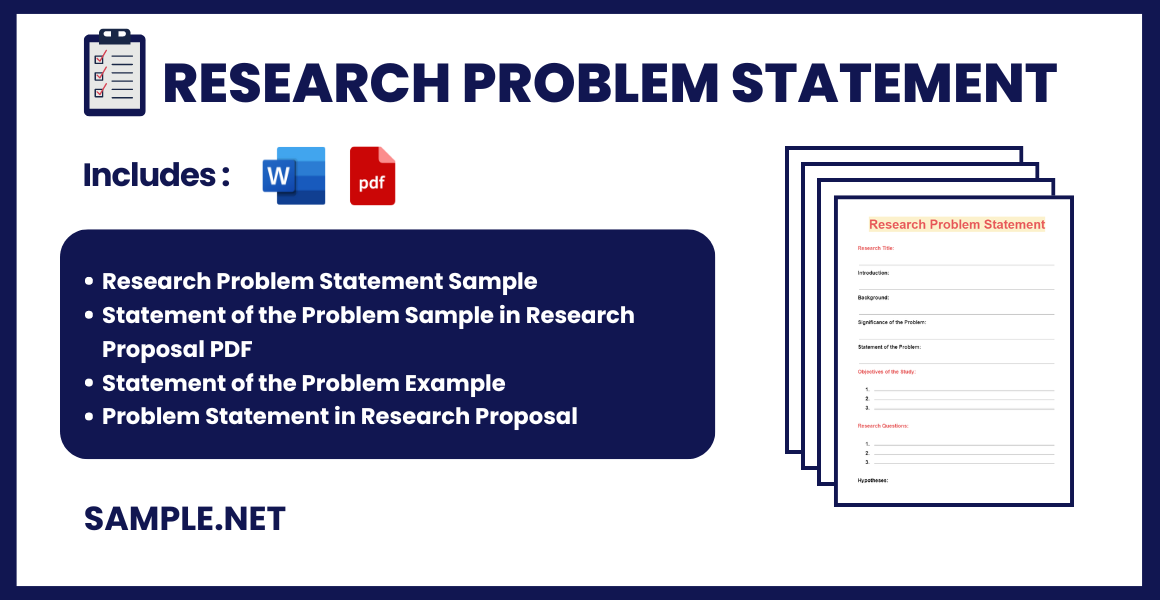
Research Problem Statement
Title
- Research Problem Title: [Title of the Problem]
Introduction
- Background: Provide context and background information on the problem.
- Significance: Explain the importance of the research problem.
Problem Statement
- Description: Clearly state the problem being addressed.
- Scope: Define the scope and boundaries of the problem.
Objectives
- Objective 1: [Description]
- Objective 2: [Description]
- Objective 3: [Description]
Research Questions
- Research Question 1: [Description]
- Research Question 2: [Description]
Conclusion
- Implications: Discuss the potential impact of solving the problem.
- Call to Action: Encourage further research or action.
What is Research Problem Statement?
A Research Problem Statement clearly defines the issue or gap in knowledge that a study aims to address. It outlines the specific problem, its context, and the research objectives. This statement is crucial for guiding the research process, ensuring that the study remains focused and relevant. It typically includes a brief background, the problem’s significance, and the research questions or hypotheses. By clearly articulating the research problem, scholars can better design their methodology and contribute valuable insights to their field. Understanding this foundational concept is essential for any researcher aiming to produce impactful work.
Types of Research Problems
When writing research problems, it is critical to pinpoint the issue that an organization wants to address. There are many ways to address a research subject or idea according to the composition of the problem statement. Different types of research problems seek to answer various questions about a topic. The section below mentions the conceptualization of a research problem in the area of social sciences.
Components of a Research Problem Statement
After figuring out the type of research problem to use, you must know the essential elements that make your statement relevant to perform a study. It is critical for a research problem statement to contain these elements as it makes the research problem identifiable and relatable to audiences. Below are the essential components that researchers must include in their research problem statements.
How To Formulate a Research Problem Statement
Creating a research problem statement for a study allows the researchers to develop a clear purpose for the investigation, supporting the objective of the research consumer. The focus of the research is to supply reliable and accurate information to address the problem. A research problem statement enables researchers to have an effective tool to always remain on track with achieving a plausible solution and evaluation. This section of the article provides you with five steps that will help you formulate a research problem statement with ease.
-
Step 1: Specify the Research Objectives
Having a clear statement of the objectives with corresponding definitions helps to execute and develop effective, factual, and significant research. Researchers must follow a SMART Goal-Setting process to achieve success when developing research objectives. Setting up several goals gives the right amount of leverage to keep the study relevant over time. Writing the research objectives also enable professors or advisers in evaluating the research questions in need of solutions, including the possible methods that the researchers utilize to achieve them.
-
Step 2: Review the Context of the Research Problem
Researchers need to conduct practical experiments that involve all environmental variables to ensure that the marketing project plan becomes a success. Reviewing the context of the research problem is essential because it helps the researchers to define the crucial findings of the study with accompanying information of its validity for consideration. The researchers must determine the environmental conditions that influence the research and formulate effective and necessary processes that manage and control them.
-
Step 3: Explore the Nature of the Research Problem
Research problems vary from simple to complex, depending on the available variables and their relationship with one another. Some component proves relevant to answer specific Research Questions, while others remain irrelevant throughout the timeline of the research study. It is critical to understand the nature of the research problem as it enables the researchers to formulate effective and justifiable solutions. A researcher must consider forming focus groups and other means of data collection and Data Analysis to collect meaningful and factual information to a research question.
-
Step 4: Determine the Variable Relationships
When it comes to conducting research studies about behavioral, scientific, and social sciences, including other relevant studies centers on developing repetitive and Consecutive Behaviors over time. To determine the project or research validity, a researcher must identify the necessary variables that bring probable solutions to the problem, decide on the extent of control measures for the study, determine functional connections between current variables, and select the most viable variable to produce a valuable solution to the research problem. Consider generating as many potential actions and relationships as possible. You may also see Sworn Statement
-
Step 5: Consequences of alternative approaches
Having various approaches means that there are different outcomes. For each course of action a researcher takes, they must anticipate the consequences that follow. The primary goal of the research process is to communicate all the necessary findings to the readers, including the possible effects or developments of experiments, whether they be positive or negative. You may also see Witness Statement
What are the three parts of a problem statement?
Problem statements essentially contain three elements. The first element is the problem itself, with accompanying contextual information that establishes its importance. The second element is the research method. The research method aims to present a possible solution to the problem through a statement claim or an ongoing research study plan. The last element of a problem statement contains the purpose of the study, a statement of objectives, and the scope of the study that the researcher is preparing.
What is the importance of a problem statement?
Problem statements are crucial in the decision-making process when developing improvement projects for businesses and organizations. Problem statements also identify the problem and provide rational explanations in a sample brief yet detailed manner that gives audiences comprehensive information. It also clarifies the possible outcomes of solving these problems. You may also see Disclaimer Statement
What makes a good problem statement?
An effective problem statement must state an undesirable gap between present and future states relating to the level of performance. The problem statement must indicate absolute and relative measures to solve the problem and quantify the gap analysis. On the other hand, the problem statement must not include any possible causes or solutions and must distinguish the time and place when the problem arises and the trend it follows.
What Do You Write in a Research Problem Statement?
A research problem statement outlines the issue your study aims to address, providing a clear direction for your research.
- Introduction: Briefly introduce the context and background of the problem.
- Problem Description: Clearly state the specific problem or gap in knowledge, akin to a Case Study Problem Statement.
- Significance: Explain why solving this problem is important for the field or society.
- Objectives: Define what your research aims to achieve in addressing the problem.
- Research Questions: Pose the main questions your study will answer. You may also see Marketing Problem Statement
What Are the Three Parts to the Problem Statement?
A well-structured problem statement typically includes three key parts to ensure clarity and focus.
- Problem Identification: Describe the problem clearly and concisely.
- Background Information: Provide context and background, similar to a Bank Statement detailing financial history.
- Proposed Solution: Outline the approach or methodology you will use to address the problem.
What Are the Five P’s of the Research Problem?
The Five P’s help in thoroughly analyzing and articulating the research problem.
- Purpose: Define the purpose of the study, similar to a Statement of Purpose.
- Problem: Identify the core problem being addressed.
- Perspective: Specify the perspective or angle from which the problem will be examined.
- Population: Identify the population affected by the problem.
- Process: Describe the process or method to address the problem. You may also see Statement of Acknowledgement
What Are the 7 Steps in Formulating a Research Problem?
Formulating a research problem involves a systematic approach to ensure a focused and feasible study.
- Identify a Broad Topic: Start with a general area of interest.
- Conduct Preliminary Research: Gather initial information to understand the topic better.
- Narrow Down the Topic: Focus on a specific aspect of the broad topic.
- Identify Gaps in Literature: Look for areas that lack sufficient research, akin to reviewing an Account Statement for discrepancies.
- Define the Problem Clearly: Articulate the specific problem you intend to address.
- Formulate Research Questions: Develop questions that guide your investigation.
- Evaluate Feasibility: Ensure the problem can be realistically addressed within your resources and timeframe. You may also see Project Scope Statement
What Are the 5 Elements of a Problem Statement?
A comprehensive problem statement includes five essential elements to provide a clear research direction.
- Problem Description: A detailed explanation of the issue.
- Context: Background information and context surrounding the problem, much like a Personal Statement.
- Importance: Explanation of why the problem is significant.
- Scope: The boundaries and limitations of the problem.
- Objectives: Specific goals the research aims to achieve. You may also see Nursing Personal Statement
What Are the 5 Criteria for a Research Problem?
Evaluating a research problem against specific criteria ensures its relevance and feasibility.
- Clarity: The problem should be clearly defined and understandable.
- Significance: The problem must be important and worthy of study.
- Feasibility: The problem should be solvable with available resources and time, similar to managing a Billing Statement.
- Novelty: The problem should address a new or underexplored area.
- Ethical Considerations: The problem should be ethically researchable. You may also see Cash Flow Statement
What Are the Five Phases of the Research Problem?
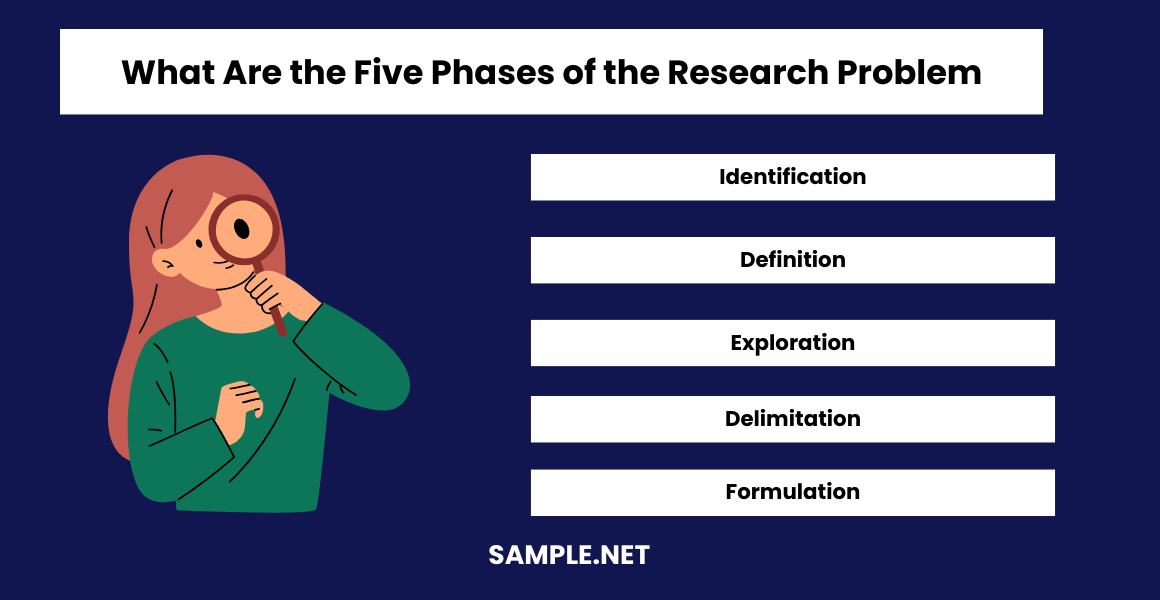
The research problem formulation involves five distinct phases to ensure thorough development.
- Identification: Recognize the initial issue or area of interest.
- Definition: Clearly define the problem, akin to writing a Self Declaration Statement.
- Exploration: Conduct preliminary research to understand the problem better.
- Delimitation: Narrow down and specify the boundaries of the problem.
- Formulation: Finalize the problem statement and formulate research questions. You may also see Relationship Statement
What is the Structure of the Problem Statement?
The structure of a problem statement includes Method Statement, the problem description, the research objectives, and the significance of the study, similar to a Policy Statement format.
Can a Problem Statement Be a Question?
Yes, a problem statement can be framed as a question to clearly articulate the research issue, much like posing a Profit and Loss Statement.
How Do You Write a Problem Statement in One Sentence?
Write a concise problem statement by clearly identifying the issue and its significance, similar to crafting a focused Thesis Statement.
How Long Should a Problem Statement Be in Research?
A problem statement in research should be brief, ideally one paragraph, capturing the essence of the issue succinctly, similar to a Closing Statement.
What is the Best Way to Write a Problem Statement?
The best way to write a problem statement is to define the issue clearly, provide context, and state the research objectives, akin to a Teaching Philosophy Statement.
What Are the Most Common Research Problems?
Common research problems include identifying gaps in literature, unresolved questions, practical challenges, theoretical issues, and conflicting findings, similar to those discussed in a Problem Statement.
What Are the Components of a Research Problem?
A research problem consists of the Background Statement, the problem description, the research questions, the objectives, and the significance, ensuring clarity and focus like a Suitability Statement.
In conclusion, a well-crafted Research Problem Statement is pivotal for guiding any research project. It not only clarifies the research direction but also highlights the study’s significance and objectives. Utilizing Sample, Forms, Letters, and practical examples, this guide has provided you with the tools to create a precise and impactful problem statement. Whether you are new to research or refining your skills, understanding and effectively writing a research problem statement is essential. It serves as a Goal Statement, aligning your research activities with your overarching research objectives, ensuring clarity, focus, and relevance throughout your study.

